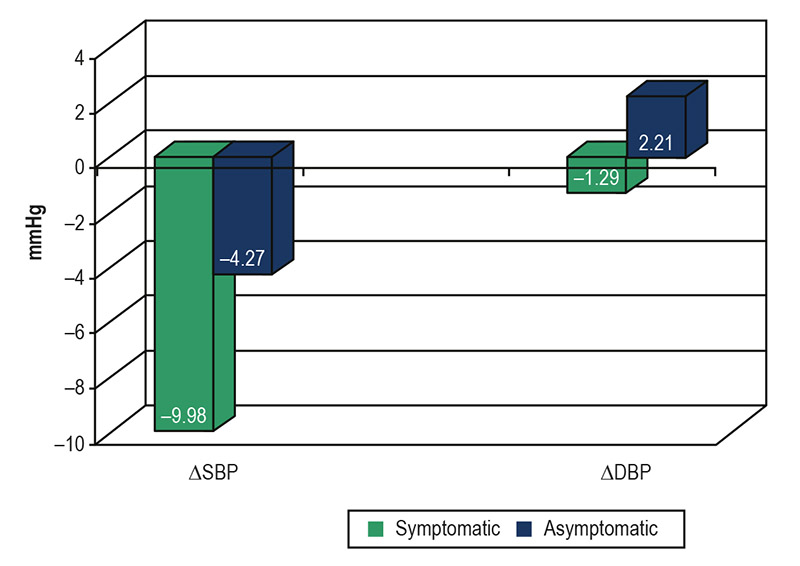Volume 111, Nº 1, July 2018
DOI: http://www.dx.doi.org/10.5935/abc.20180114
ORIGINAL ARTICLE
Carotid Sinus Massage in Syncope Evaluation: A Nonspecific and Dubious Diagnostic Method
Tan Chen Wu
Denise T. Hachul
Francisco Carlos da Costa Darrieux
Maurício I. Scanavacca

Figure 1 – Magnitudes of the responses of systolic and diastolic blood pressure to a 70° tilt in the symptomatic and asymptomatic groups. Note there is significant fall in the systolic blood pressure (p < 0,001) and diastolic blood pressure (p = 0,001) in the symptomatic group compared with asymptomatic group.
Abstract
Background: Carotid sinus hypersensitivity (CSH) is a frequent finding in the evaluation of syncope. However, its significance in the clinical setting is still dubious. A new criterion was proposed by Solari et al. with a symptomatic systolic blood pressure (SBP) cut-off value of ≤ 85 mmHg to refine the vasodepressor (VD) response diagnosis.
Objective: To determine and compare the response to carotid sinus massage (CSM) in patients with and without syncope according to standard and proposed criteria.
Methods: CSM was performed in 99 patients with and 66 patients without syncope. CSH was defined as cardioinhibitory (CI) for asystole ≥ 3 seconds, or as VD for SBP decrease ≥ 50 mmHg. Results: No differences in the hemodynamic responses were observed during CSM between the groups, with 24.2% and 25.8% CI, and 8.1% and 13.6% VD in the symptomatic and asymptomatic groups, respectively (p = 0.466). A p value < 0.050 was considered statistically significant. During the maneuvers, 45 (45.45%) and 34 (51.5%) patients in the symptomatic and asymptomatic groups achieved SBP below ≤ 85 mmHg. Symptoms were reported especially in those patients in whom CSM caused a SBP decrease to below 90 mmHg and/or asystole > 2.5 seconds, regardless of the pattern of response or the presence of previous syncope.
Conclusion: The response to CSM in patients with and without syncope was similar; therefore, CSH may be na unspecific condition. Clinical correlation and other methods of evaluation, such as long-lasting ECG monitoring, may be necessary to confirm CSH as the cause of syncope. (Arq Bras Cardiol. 2018; 111(1):84-91)
Keywords: Syncope; Carotid Sinus / physiopathology; Accidental Falls; Aged; Hypotension.















